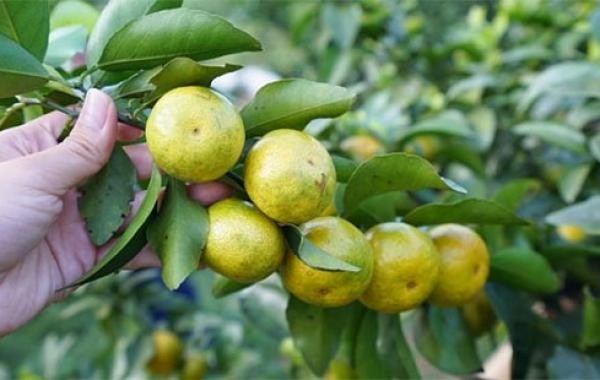
News briefing:

News briefing:
Shatang orange is a fruit tree with high economic value, which has attracted many farmers to plant it. But in the process of planting, farmers often encounter various pests and diseases. Therefore, the use of chemical agents for prevention and control has become one of the frequently done tasks. However, there are countless examples of pesticide phytotoxicity damaging Shatangju. This article introduces you in detail, and I hope it can be helpful to farmers.
1. Symptoms of phytotoxicity
1. Spots: mainly occur on leaves, sometimes also on branches and fruits. Common symptoms: brown spots, maculas, dead spots, mesh spots.
2. Yellowing: It occurs in the stems and leaves of the plant, and the leaves are more common.
3. Deformities: occur in the stems, branches, and leaves of the plant. Common symptoms: curling leaves, clumping leaves, deformed ears (fruits), etc.
4. Wilt: It is often the symptoms of the whole plant, most of which are caused by herbicide damage.
5. Falling off: falling leaves, falling flowers, and falling fruits.
6. Growth stagnation: phytotoxicity inhibits the normal growth of crops.
7. Inferior fruit: The fruit is small after phytotoxicity, the peel is abnormal, and the quality deteriorates.
8. Infertility: It is caused by improper medication of crops during reproductive growth.
2. Remedial measures
1. Water spraying or irrigation: After spraying pesticides on the foliage, spray water immediately to dilute and wash away the pesticides attached to the foliage and branches to reduce the pesticide content in the tree. If the soil application of carbofuran granules or other spray (application) of herbicides causes phytotoxicity, measures should be taken to drain and lavage the medicine. That is, flood irrigation first, and then 1-2 times of horse racing water to wash away the residual pesticides in the soil.
2. Neutralization by spraying (fertilizer): If organic phosphorus, pyrethroid, carbamate pesticides cause phytotoxicity, 0.5-1% lime water, washing powder, soapy water and other alkaline substances can be sprayed to neutralize and detoxify . You can also spray 0.5-1% ammonium bicarbonate and other alkaline fertilizer solutions, which can not only detoxify, but also play the role of top dressing and promote the recovery of growth (the concentration should be appropriate to avoid aggravating the phytotoxicity).
3. Timely topdressing: acidic pesticides are harmful to pesticides, and plant ash or quicklime is spread on the ground. Alkaline pesticides are harmful, and acid fertilizers such as ammonium sulfate are topdressed on the ground. Regardless of the nature of the pesticide phytotoxicity, 0.2-0.3% potassium dihydrogen phosphate should be sprayed on the foliage for topdressing, once every 10-15 days, and spray 2-3 times in a row.
4. Injecting clean water: To prevent and control tree trunk pests such as longhorn beetle, and cause phytotoxicity due to overdose of injections, a large amount of clean water should be injected into the tree body at the worm hole of the trunk immediately and let it flow out to dilute the pesticide. If acidic pesticides are poisoned, add proper amount of lime to the injected clean water to accelerate the decomposition of pesticides.
5. Soil loosening/soil cultivation: field loosening soil (10~15 cm), adding phosphorus and potassium fertilizers to promote root growth.
3. Preventive measures
1. Microbial control. Aiming at the situation of Shatang orange yellowing disease and Huanglong disease, the purpose of effectively preventing Shatang orange yellowing disease and Huanglong disease can be achieved by supplementing the beneficial flora of fruit trees.
2. Proper pruning: cut off the dead branches and timely removal of dead leaves to prevent the dead branches and leaves from spreading and consuming the water evaporation of the tree body to aggravate phytotoxicity and death.
Date of opening:1970-01-01 Shop address: Main products: Store certification time:1970-01-01 08:00:00
Store Name: Principal: Contact number: email: